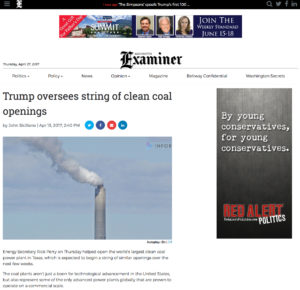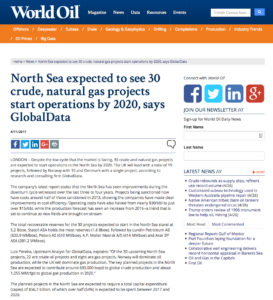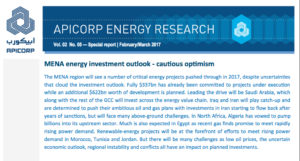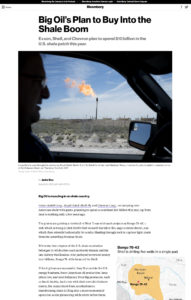New U.S. Clean Coal Power Plants: Carbon Capture For Oil Fields 04/13/17 •lweb.es/f2775 •bit.ly/2qgZdMN
 “While the Petra Nova project will certainly benefit Texas, it also demonstrates that clean coal technologies can have a meaningful and positive impact on the nation’s energy security and economic growth,” said Energy Secretary Rick Perry.
“While the Petra Nova project will certainly benefit Texas, it also demonstrates that clean coal technologies can have a meaningful and positive impact on the nation’s energy security and economic growth,” said Energy Secretary Rick Perry.


 30 crude and natural gas projects are expected to start operations in the North Sea by 2020. The UK will lead with a total of 19 projects, followed by Norway with 10 and Denmark with a single project, according to GlobalData. The total recoverable reserves for these projects are expected to stand at 5.2 billion barrels of oil equivalent. The planned projects in the North Sea They are expected to require a total capital expenditure of $56.7 billion, of which over half (54%) is expected to be spent between 2017 and 2020.
30 crude and natural gas projects are expected to start operations in the North Sea by 2020. The UK will lead with a total of 19 projects, followed by Norway with 10 and Denmark with a single project, according to GlobalData. The total recoverable reserves for these projects are expected to stand at 5.2 billion barrels of oil equivalent. The planned projects in the North Sea They are expected to require a total capital expenditure of $56.7 billion, of which over half (54%) is expected to be spent between 2017 and 2020. In the Middle East North Africa region $622 billion worth of development is planned in the energy sector for the next five years. The power sector accounts for the largest share at $207 billion, with the oil and gas sector at $195 billion and $159 billion respectively. Leading the drive will be Saudi Arabia, and Iraq and Iran will play catch-up. Algeria will pump billions into its upstream sector, and much is expected from Egypt’s recent gas. Renewable-energy projects will be at the forefront of efforts to meet rising power demand in Morocco, Tunisia and Jordan.
In the Middle East North Africa region $622 billion worth of development is planned in the energy sector for the next five years. The power sector accounts for the largest share at $207 billion, with the oil and gas sector at $195 billion and $159 billion respectively. Leading the drive will be Saudi Arabia, and Iraq and Iran will play catch-up. Algeria will pump billions into its upstream sector, and much is expected from Egypt’s recent gas. Renewable-energy projects will be at the forefront of efforts to meet rising power demand in Morocco, Tunisia and Jordan. Exxon Mobil, Royal Dutch Shell and Chevron plan to spend a combined $10 billion this year in American shale.
Exxon Mobil, Royal Dutch Shell and Chevron plan to spend a combined $10 billion this year in American shale.